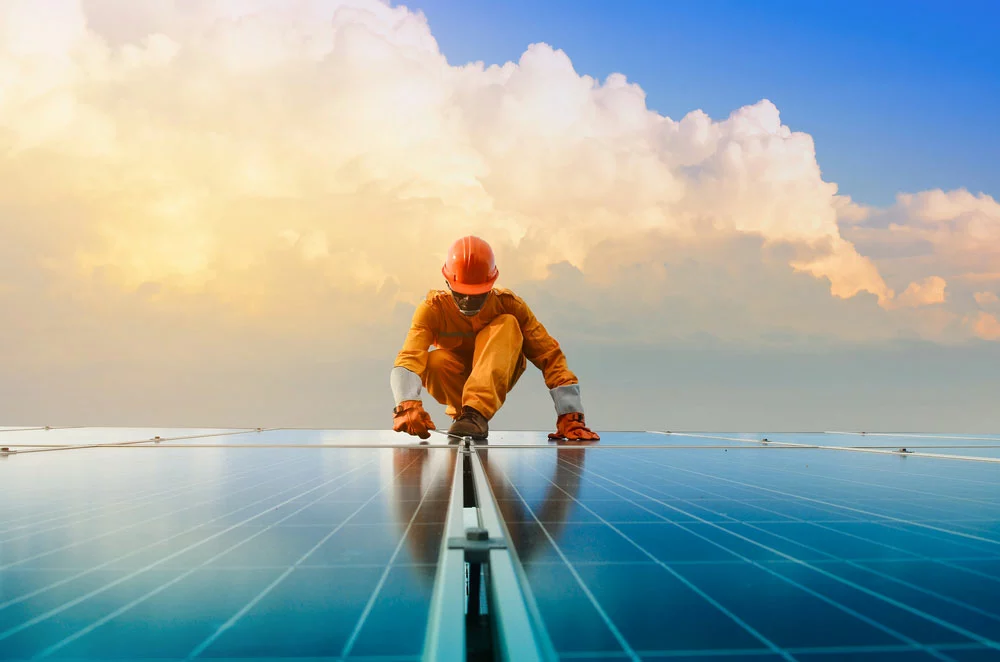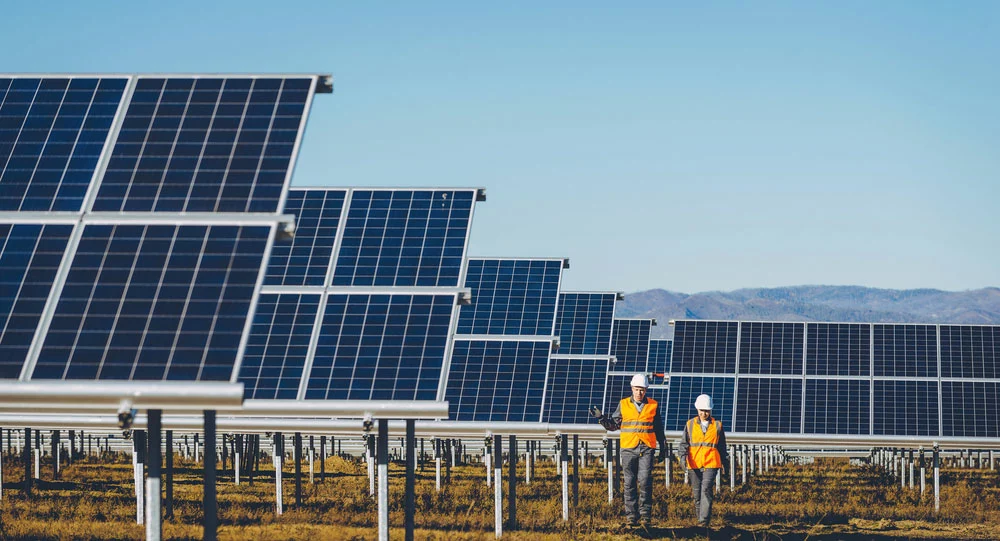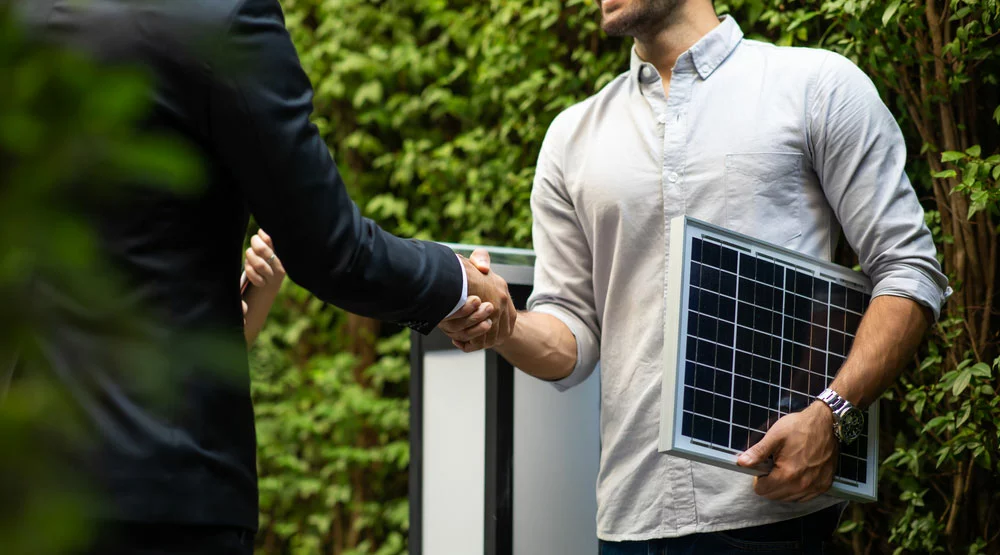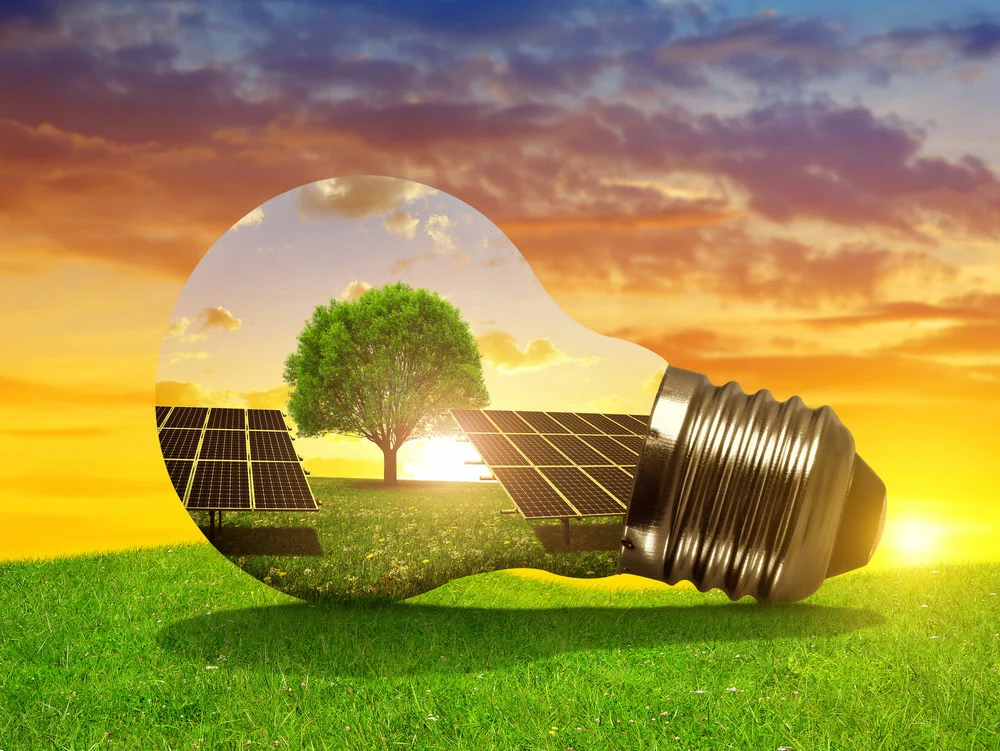Solar offers the peak of green, renewable energy and is the best way to reduce your electrical bills. It’s similar to regular electricity from the grid and can power an entire house efficiently. But one question that lingers in the mind when switching to solar is: How big are solar panels? And how many do I need for my home?
The various sizes are enough to keep you confused. Luckily, we’re here to help. This article will discuss several relevant details on how large solar panels are and the sizes you may need.
How Many Solar Panels Do I Need to Power My House?

Man installing solar panels
One thing to note before sizing up your solar panel is the home’s energy consumption. YoIt would help if you determined how much power you’ll need to run your home with solar systems. Otherwise, you’ll end up with a less-efficient setup.
Here’s what you need to do before calculating your solar panel size:
- Determine your home’s yearly energy consumption–preferably in kWh.
- Calculate how much you pay per kWh of electricity.
- Determine the irradiance level (sun energy) in your location.
- Decide if your solar system will be off-grid or grid-tied. Off-grid solar systems will need batteries.
- If you’re going for off-grid, determine the type of battery you’ll use.
- Calculate the required solar panel size in watts.
- Decide if you’ll use a string, central, or micro-inverter system design.
What’s the Average Household Solar System Size?

Multiple solar panels
Generally, an average household will need approximately six solar panels, each with 300 watts ratings. This solar panel size works with an irradiance of 4kWh/m2/day for every 5kWh energy consumed daily.
Interestingly, the average US home needs approximately 30kWh daily. Hence, it will need thirty-six solar panels with 300 watts ratings each.
Solar Panel Size Chart
| Size in Watts | Width (inches) | Thickness (inches) | Length (inches) |
| 350 | 39 | 1.6 | 77 |
| 250 | 39 | 1.6 | 65 |
| 200 | 28.5 | 1.6 | 66 |
| 160 | 26 | 1.5 | 58 |
| 100 | 21 | 1.5 | 47 |
| 50 | 21 | 1 | 26 |
Factors that Determine the Size of Your Solar Energy System

Man buying a solar panel
Here are some crucial factors to consider before installing solar systems. These considerations will determine how many solar panels you’ll need for your application.
Your Power Bill (Monthly and Yearly)
Your electrical bills are the foundation for your solar energy goals. It’s the first thing you must analyze if you want to run your home with solar energy.
In truth, if your monthly bill is $150 ($1800 yearly), you may need a solar system providing up to $2000 worth of energy.
Your Power Usage (Monthly and Yearly)
You can find your usage on your power bill in kWh. Also, you can estimate your yearly usage by adding up the kWh used in the last 12 months if your total is 15,000 kWh. Your monthly power usage would be 1,250 kWh.
Also, it would help if you considered how much energy you want your panels to generate. Do you want 80%? 50%? Or everything you can muster?
We recommend opting for 80% of your power usage. So, if you’re on 1500 kWh, you can get a solar array that provides 1200 kWh/month.
Note: Also include your daily power usage. Divide your average monthly power usage by 30 to determine the daily kWh.
Fluctuating Power Generation
The months come with different sunlight levels that can impact solar energy production. Although the months ideal for solar arrays differs according to region, there are times when you’ll generate excess solar energy. Hence, you’ll need to consider the following:
- Where you the following excess solar power will go in the summer months.
- If your utility providers offer solar buyback (net-metering) programs.
- Will you store excess energy in batteries?
Producing more energy than you require won’t benefit you if you’re not storing it in batteries or selling it back to the grid. We recommend aiming for a solar goal of less than 100%. There’s a high chance you won’t generate more than you need if your goal is 80%.
But, if you have access to batteries and buyback programs, aiming for goals closer to 100% will have more advantages.
Note: Try replanning your goals while considering excess energy.
Make some Calculations
Now, let’s calculate your solar panel’s size. You should have the required information from the previous factors. Here is the formula we’ll use:
kWh per month divided by ( the average sunlight per day multiplied by 30) = kW solar system
For instance, if you use 1500 kWh per month and an average of 6.5 hours of sunlight daily, the maths would be: 1500 divided by 6.5×30 or 1500/195 = 7.70 kW.
Therefore, you’ll need a 7.70 kW solar energy array to generate 1000 kWh monthly with 6.5 hours of direct sunlight daily. Interestingly, you’d need twice as much to generate the same energy in areas with 3 hours of sunlight daily.
Check your Roof’s Square Footage
Let’s say a panel measures about 17.5 square feet. So, buying 20 panels would require approximately 350 square feet of roof space. And it should face an optimal direction for sunlight.
How many solar panels will you need? Well, that depends on your system size. Following our examples above, a 7 kW system equals 7000 W. So, if you’re aiming for 300 W solar panels, divide 7000 by 300 (7000/300 ≈ 23). Therefore, a 7 kW solar system would require twenty-three 300-watt solar panels.
How Much Do Solar Panels Cost?
Several factors can determine panel costs. Usually, these include panel efficiency, quantity, and brand. Installation can also affect the cost of a solar panel system.
A 7kW system may cost around $20,000-$25,000. Luckily, the price can drop due to solar power tax incentives.
Wrapping up

Solar energy illustration
Switching to solar energy is one of the best ways to reduce or eliminate your power bills. Since these systems harness sun power, you won’t work on electricity from the grid.
Even if you use on-grid solar systems, your bills will be cut down by large margins. However, installing solar arrays is not as simple as the thought. YoYou’dave to consider your power usage and the amount of power you need and avoid available rooftop space.
Once you consider all the factors listed in this article, installing a solar panel system will be a breeze.
Feel free to contact us if you have more questions. We’ll be happy to assist.
